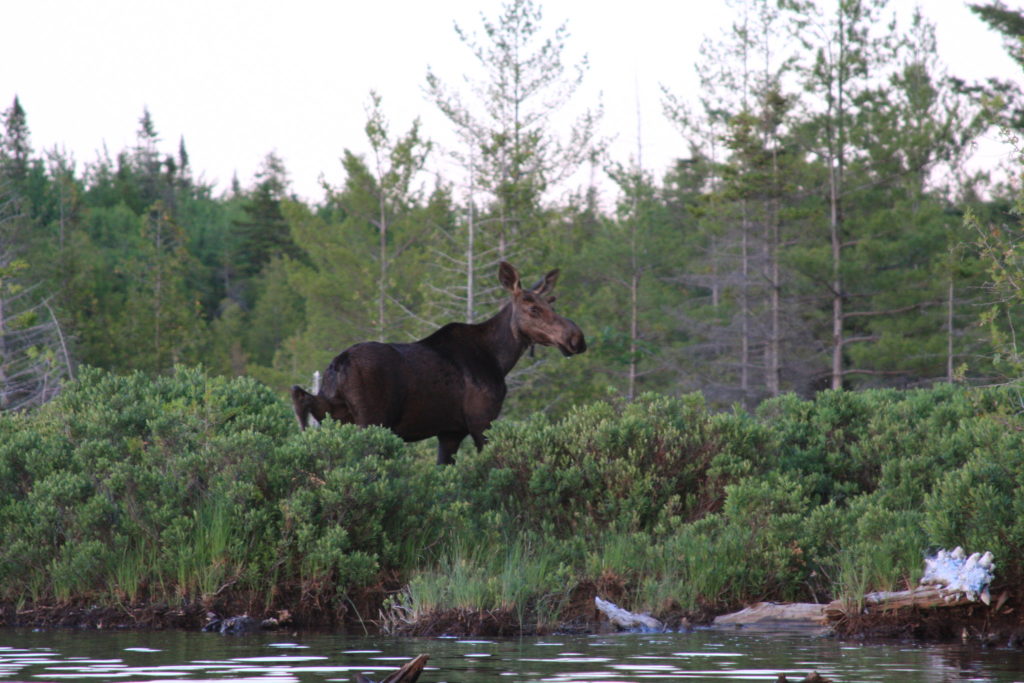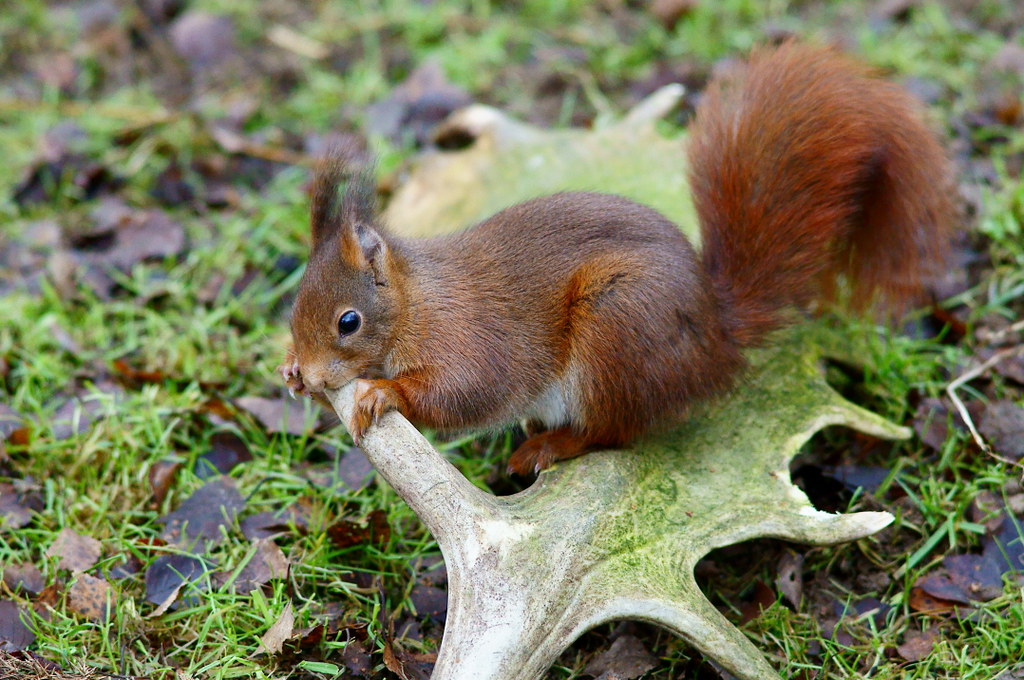Welcome to Creature Feature, a weekly series from the CELT education team highlighting local wildlife. Each week, we will share a short introduction to a local organism that you might encounter in your backyard or on our trails.
The iconic, magnificent Maine Moose! This animal is not only a cultural figurehead, but in fact the official Maine State Mammal.

If you have ever been lucky enough to spot a moose you know just how big they truly are. Moose are the largest member of the deer family, weighing between 800 – 1,200 pounds! Moose can stand up to 7 feet tall not including those impressive antlers.
Speaking of antlers, like all members of the deer family only the male moose grow antlers. Their massive antlers average 5 1/2 feet across that can weigh up to 40 pounds. Antlers are grown from living tissue supplied by blood through a network of vessels covered with a soft, smooth skin called velvet. The velvet is scraped off once the tissue hardens. Each moose has its own unique shaped antlers.
Antlers are different than horns, in part because they are shed each year. This usually happens in November/December, and they are regrown bigger each spring. (Horns grow continually through an animal’s life.) Antlers are also “branched,” while horns are a single continuous growth.
Ever wonder why it is so hard to find antlers in the woods? Since both moose and deer shed their antlers in early winter they are well camouflaged in the snow. Plus, those antlers are full of vitamins, minerals and other nutrients which hungry rodents love to gnaw on in the winter when food sources are scarce.

Moose have very poor eyesight, but their hearing and sense of smell are excellent.
Moose are vegetarians, or herbivores, eating tender deciduous vegetation and aquatic plants. Adult Moose really have very few predators, with no other animals being big enough to take down a full-grown moose. Coyote and bear are a threat to young moose, though, as well as diseases and even parasites like the winter tick.
Moose can be found throughout Maine, and their range is expanding farther south except along the coast. Moose prefer habitat that is swampy, like areas of regenerating clear-cut with large bogs or even open water. They also like the deep Maine woods with pockets of boggy and swampy areas. While these requirements tend to keep moose in more rural areas, there have been sightings of a stray moose or two here in Cape over the years.
Fun Facts!
- Moose can run up to 35 miles per hour
- Moose can easily swim 10 miles
- A moose can store over 100 pounds of food in its stomach
- Maine is home to the highest moose population in the lower 48 states
Here are some resources if you want to learn more and maybe go on an adventure and see a Maine moose!
- https://www.northernoutdoors.com/where-to-see-moose-in-maine/
- https://visitmaine.com/things-to-do/wildlife-watching/moose-watching
- https://www.rangeley-maine.com/attractions/rangeley-moose-watching/
- https://northeastwhitewater.com/maine-moose-watching/moose-tours/
- https://www.maine.gov/ifw/wildlife-park/index.html
—BY LISA GENT, CELT EDUCATION COMMITTEE CHAIR
